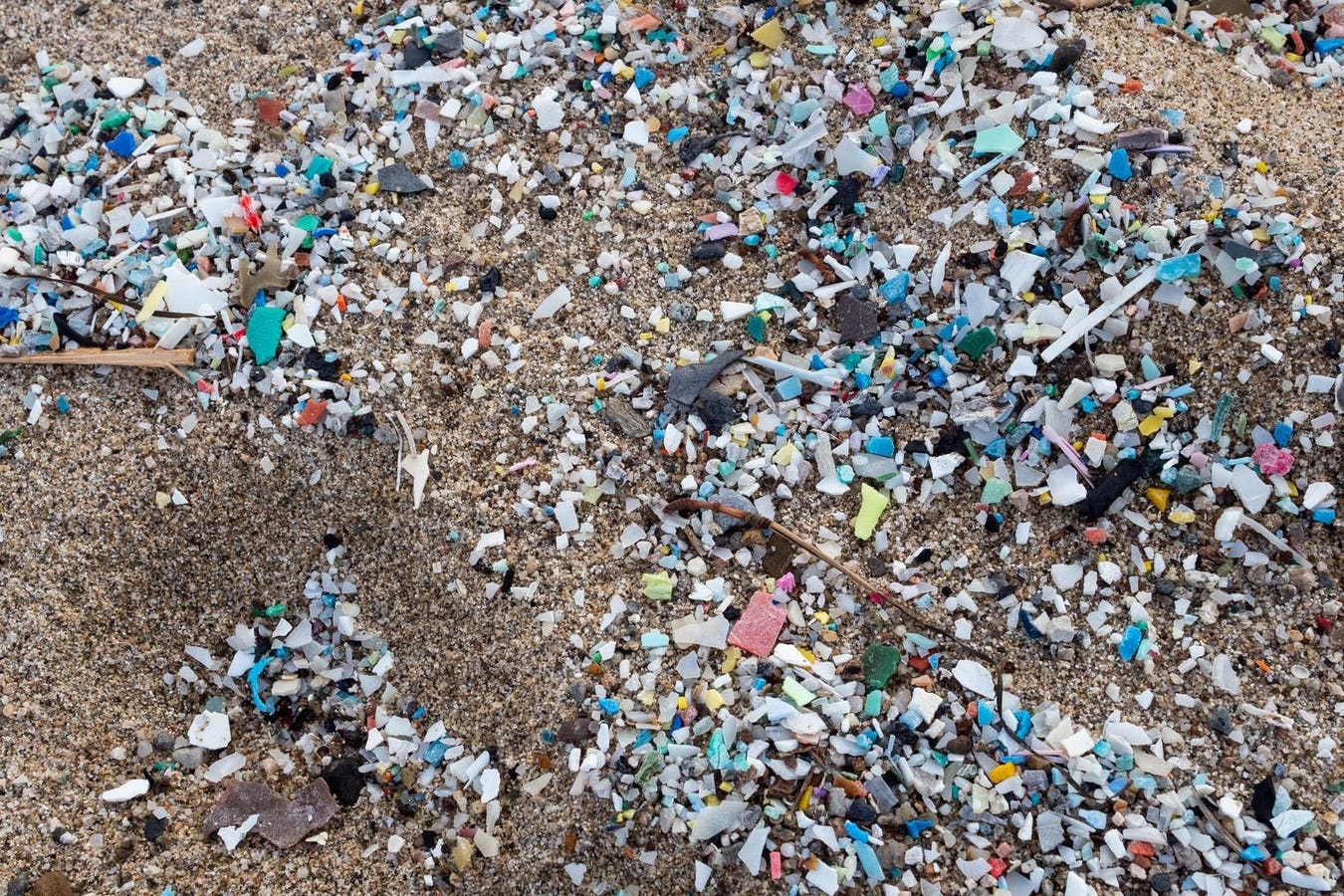
Microplastics In Arteries Heighten Heart Attack And Stroke Risk, Study Warns
Microplastics litter a beach in Calabria, Italy. Scientists are exploring what happens when the … [+] plastic pollution enters the human body.
LightRocket via Getty Images
Tiny bits of plastic that make their way into our blood vessels could increase the chance of heart attacks, strokes and death, a new study cautions.
Wait, back that up. Microplastics are showing up in our arteries? Last year, another study showed evidence of teeny plastic fragments in human hearts. The latest research, published in The New England Journal of Medicine last week, goes a step further, exploring what the chemical-laden debris that invades our bodies means for heart health.
A team of researchers, most from Italy, screened artery-clogging plaque surgically removed from patients undergoing a procedure to treat asymptomatic carotid artery disease. Carotid arteries, located on either side of the neck, are the main blood vessels that carry oxygen and blood to the brain, and when these passageways get blocked, the risk of stroke increases.
After examining the excised fatty deposits, the scientists followed up with 257 study subjects almost three years after surgery. They found that those with plastic in their carotid plaque had experienced a nonfatal heart attack, nonfatal stroke or death from any cause about four times as often as those whose blood vessels didn’t contain the plastic. The plaque tissue that contained shards of plastic also showed signs of increased inflammation.
The small study marks the first time scientists have linked microplastics to cardiovascular disease, though the paper clearly states that the results don’t prove causality and that other factors such as smoking and inactivity could sway the patients’ health outccomes. Still, the researchers say the findings are an important addition to the growing body of research on health dangers related to plastic, and they should be further explored on a larger scale and in broader populations.
“Although we do not know what other exposures may have contributed to the adverse outcomes among patients in this study, the finding of microplastics and nanoplastics in plaque tissue is itself a breakthrough discovery that raises a series of urgent questions,” Dr. Philip Landrigan, a Boston College biology professor who was not involved with the study wrote in a New England Journal of Medicine editorial accompanying the study. “Should exposure to microplastics and nanoplastics be considered a cardiovascular risk factor? What organs in addition to the heart may be at risk? How can we reduce exposure?”
Jagged foreign particles spotted in the study subjects’ plaque through techniques including electron microscopy and chemical analysis included polyethylene, a polymer used in plastic bags, containers and bottles that appeared in 58 percent of those studied. A little over 12% also showed evidence of polyvinyl chloride in their systems. PVC is widely used in everything from drainage pipes to window frames, flooring, car interiors and shoes.
How Do Microplastics Enter Our Bodies?
The plastic that’s become so omnipresent in the world gets inhaled, ingested through food and water or absorbed through the skin and then makes its way into the bloodstream.
The study found both microplastics and nanoplastics in blood vessels. Microplastics are defined as fragments that measure less than 5 millimeters. Anything smaller is considered a nanoplastic. Previous studies have discovered microplastics and nanoplastics in human stool, as well as in multiples tissues, from placentas and lungs to spleens and livers.
Toxic plastic additives have already been found to harm sea turtles, birds, fish and other wildlife, but until now, the data on how plastic debris impacts human bodies has been limited.
Microplastics are getting worse with climate change, according to the National Institutes of Health. That’s because rising sea levels and changing ocean currents can transport the small plastic particles more widely, as can extreme weather events such glacial thawing. Plus, rising temperatures increase the degradation of the plastic waste as it gets moved around.
Landriganm of Boston College directs the school’s Program for Global Public Health and the Common Good and the Global Observatory on Planetary Health. He said the study should function as both a warning siren and a call to action.
“What can physicians and other health professionals do? The first step is to recognize that the low cost and convenience of plastics are deceptive and that, in fact, they mask great harms, such as the potential contribution by plastics to outcomes associated with atherosclerotic plaque,” he wrote in the piece associated with the study. “We need to encourage our patients to reduce their use of plastics, especially unnecessary single-use items.”


